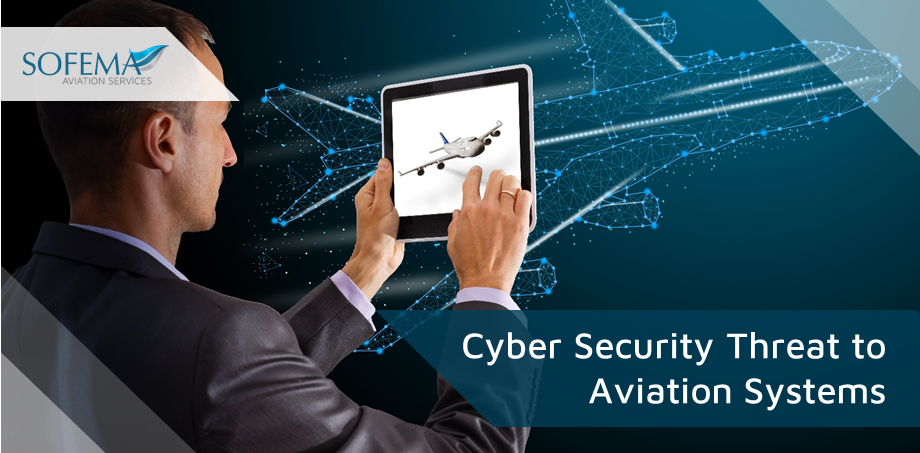Introduction by Sofema Aviation Services (SAS) www.sassofia.com understanding the current cyber security threats to our aviation domains, particularly in the context of European Operations.
The possibility for malicious aviation cyber acts continues to threaten the integrity of the aviation system and the potential grows almost daily. A continuing challenge is a task of identifying potential cyber vulnerabilities across many different and often complex aviation systems, some integrated and some disparate.
Introduction Considering Aviation Key Elements Vulnerable to Cyber Attacks:
- Access, Departure and Passport Control Systems
- Cargo handling and shipping
- Reservation Systems
- Hazardous Materials Transportation Management
- In-Flight Entertainment (IFE) and Connectivity Systems
- e-Enabled ground and onboard systems
- Electronic Flight Bags (EFB)- an electronic information management device that helps flight crews perform flight management tasks easily and efficiently.
- Cabin crew devices
- Flight traffic management systems:
o Primary and Secondary Radar
o Automatic Dependent Surveillance-Broadcast (ADS-B),
o Global Navigation Satellite System (GNSS), including GPS,
o GLONASS, GALILEO, BEIDOU and some other Regional Satellite Systems IRNSS(India), Zenith (Japan) and Compass (China).
- Airplane Information Management System (AIMS), including among others:
o The Flight Management System
o The Thrust Management System
o The Data Communication Management (Datalink) / Aircraft Communications Addressing and Reporting System (ACARS)
o The Central Maintenance System and the Flight Data Acquisition System.
Aviation Cybersecurity – Where is the Aviation Industry Heading?
The industry is aware of the cybersecurity challenges and is working very hard to address Aviation Cybersecurity
- With increasing concerns about cybersecurity in all the different aviation domains, the industry needs to show leadership and needs to be at the forefront of cybersecurity.
- Artificial intelligence and, in particular, machine learning as its subset will also have applications in aviation cybersecurity. A weaponized AI in the hands of cyber criminals is a very worrying scenario. However, it also highlights the importance of investing heavily in AI defence and research.
- Emerging machine learning models will create greater protection against these sophisticated and complex threats.
- The use of encryption is and will continue to be, critical to the aviation industry to help protect both air traffic control and flight traffic management systems’ information as well as customer and employee information which might include payment cards, national IDs, passport numbers, bank accounts and other Personal Identifiable Information (PII) and privacy.
Next Steps
Sofema Aviation Services offers the following courses delivered as classroom or webinars – EASA Compliant Organisational Cyber Security Responsibilities
Please see www.sassofia.com or email team@sassofia.com
Tags:
Aircraft Communications Addressing and Reporting System (ACARS), Airplane Information Management System (AIMS), Automatic Dependent Surveillance, aviation cyber security training, Aviation Key Elements, aviation systems, Aviation Training, BEIDOU, Broadcast (ADS-B), Cabin crew devices, Central Maintenance System, Compass (China), Cyber Attacks, Cyber Security, Data Communication Management (Datalink), Electronic Flight Bags (EFB), European Operations, flight crews, Flight Data Acquisition System, Flight Management System, GALILEO, Global Navigation Satellite System (GNSS), GLONASS, Hazardous Materials Transportation Management, In-Flight Entertainment (IFE) and Connectivity Systems, Passport Control Systems, Primary and Secondary Radar, Regional Satellite Systems IRNSS(India), SAS blogs, Thrust Management System, Zenith (Japan)




